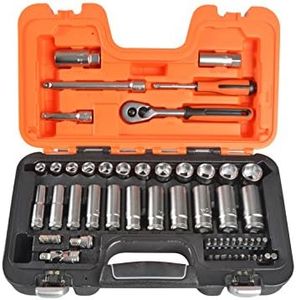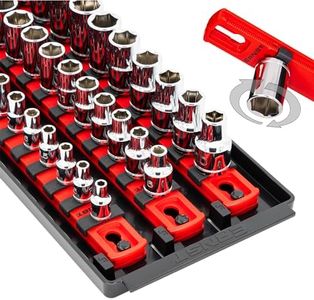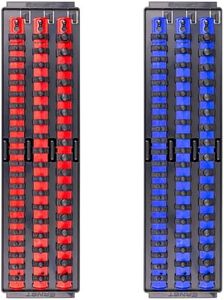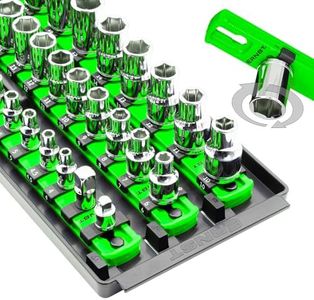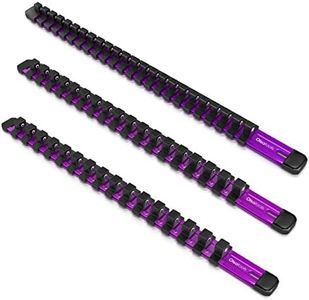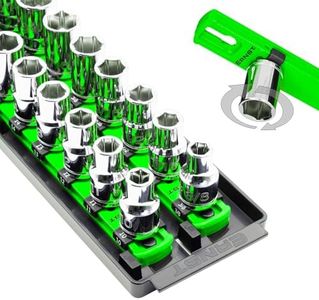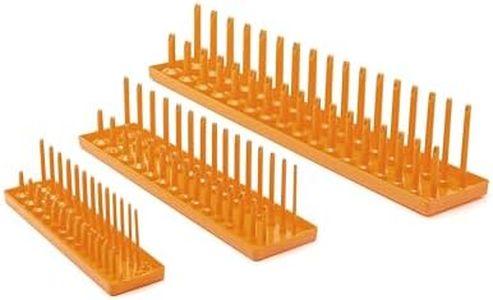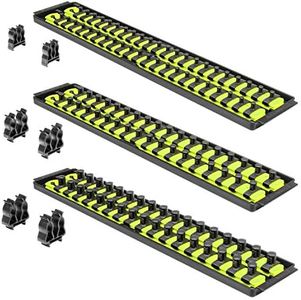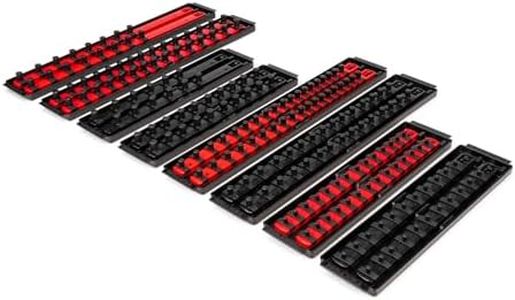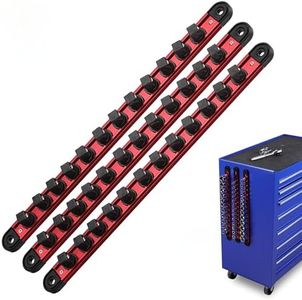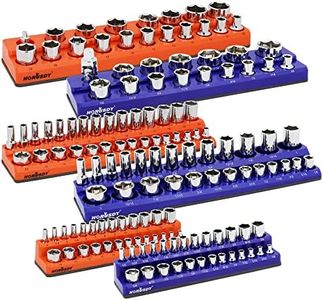We Use CookiesWe use cookies to enhance the security, performance,
functionality and for analytical and promotional activities. By continuing to browse this site you
are agreeing to our privacy policy
10 Best Socket Holders
From leading brands and best sellers available on the web.By clicking on a link to a third party's website, log data is shared with that third party.
Buying Guide for the Best Socket Holders
Choosing the right socket holder is essential to keep your tools organized, accessible, and protected from damage or loss. A good socket holder will make it easier to find the right socket size quickly while you work, and can help you transport your sockets conveniently if you move between workspaces. Think about your workspace, the number of sockets you own, and how mobile you need your socket organization to be.MaterialThe material of a socket holder determines its durability, strength, and longevity. Socket holders are typically made from plastic, metal, or a combination of both. Plastic holders are lightweight and often cost-effective, but may be less durable under heavy use. Metal holders, such as those made from steel or aluminum, can withstand greater wear and are better suited for professional or heavy-duty use. When choosing, consider whether you need something lightweight for carrying or something sturdy for a fixed workshop.
CapacityCapacity refers to how many sockets the holder can store. This is important because you want to ensure all your sockets fit on one or a few holders for efficiency. Smaller holders might manage just a few sockets, while larger rail systems or cases can store complete sets. If you’re just starting out, a smaller capacity may suffice, but if you have or plan to own many sockets in different sizes (metric, SAE), opt for larger capacity holders.
Compatibility (Drive Size)Socket holders are designed to fit specific drive sizes, such as 1/4”, 3/8”, or 1/2” drives. It's important to match the socket holder with the drive sizes of your sockets or choose a holder that can accommodate multiple sizes. Some holders are adjustable or have different rails for various sizes. Assess your current socket collection so you select a holder that fits what you have and what you might acquire in the future.
Mounting TypeSocket holders can be portable for toolboxes and totes, or designed to be mounted on a wall or pegboard. Magnetic holders work well for attaching to metal surfaces and keep sockets secure during transport, while clip-on rails or bench-mount holders are useful for fixed storage. If you need to move your tools around, portability is key. For a dedicated workspace, mounted solutions may help keep your area tidy.
Retention MethodThe way a socket holder keeps the sockets in place affects ease of use and security. Common methods include clips, magnets, or twist-lock systems. Clip-based holders let you snap sockets on and off quickly, magnets hold them securely but can be heavier, and twist-locks prevent sockets from falling off even during transport. If you work in different locations, a strong retention method matters; if you’re in a stable environment, you may value quick access more.
Labeling and IdentificationSome socket holders offer clear labeling or areas to mark socket sizes, making it easier to find sockets at a glance. This feature is helpful for efficiency and organization, especially if you have a large or mixed set. If you want to save time and avoid confusion, look for holders with built-in labeling or consider how easy it is to add your own.
